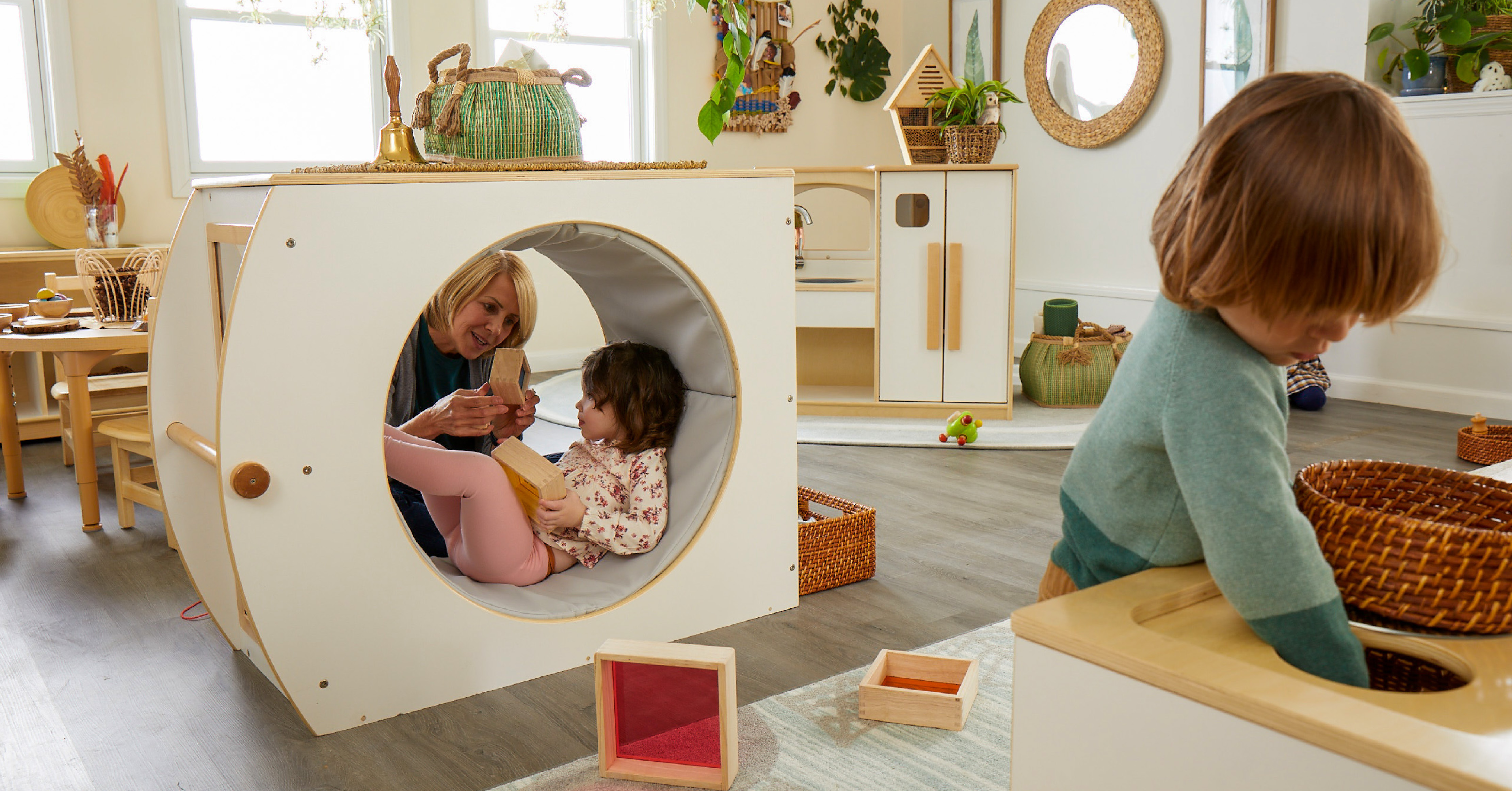Wee ones are enthusiastic improvisers. They interpret and use the environment in far different ways than adults have planned. For example, toddlers may use a classroom chair as an object for pushing around the classroom. The bottom shelf in a shelving unit might become a place for young children to hide or play. If there is a hole, they will either stuff an object or themselves inside. When designing environments for wee ones, we must be sure to expect imaginative improvisation. Expect a basket or container to be emptied and used for a hat. Anticipate that the truck from the block corner might end up in the doll cradle. In response to enthusiastic improvisers, here are a few ways to support their explorations:
- Offer small containers, backpacks, or totes with handles to support carrying and placing. Toddlers can fill up a backpack or bag with objects, such as soft balls, handkerchiefs, tree cookies, or small wooden blocks, and carry the packed stuff around the classroom. Try these Woven Baskets from Sense of Place.
- Supply lightweight objects for toddlers to move, manipulate, and use in whatever ways their imaginations and improvising takes them. Some ideas for lightweight objects include weighted tactile beanbags, sensory baby balls, and soft weighted balls used for physical rehabilitation.
- Include a heavyweight object in the classroom. Examples include a tree log, an adult-sized wooden chair, a heavy book, or a small cardboard box filled with a couple of bricks and taped shut. Don’t worry about the object being too heavy for children to lift, because pushing, shoving, and dragging are great whole-body movement experiences, and even the youngest children have innate urges to do heavy work.

The Sense of Place for Wee Ones furniture collection is designed so children can practice important movement behaviors such as making and unmaking, turning and stopping, hiding and revealing, attaching and detaching, and propelling and hindering. This furniture collection is intentionally designed so children can play with the furniture pieces from the front, back, sides, and top. At the heart of this uniquely designed collection is a focus on four key movement characteristics of wee ones:
-
- Movement Connoisseur
- Enthusiastic Improviser
- Sensory Seeker
- Pathfinder
A bout Sandra Duncan, EeD
bout Sandra Duncan, EeD
With over 45 years of experience and a doctorate in education, Dr. Sandra Duncan has a wide and varied background in early care and education. She has extensive experience in working with young children and parents, teaching at the university level, designing professional development programs for practitioners, and authoring several teacher resource books. Now, Dr. Duncan is bringing her years of theory and best practices to the early childhood classroom in the form of the Sense of Place furniture collection - an exclusive to the Kaplan portfolio of furniture offerings. With its modern aesthetics, many authentic and true-to-real-life details, and considerations for what the youngest of children need to thrive best in their first learning environments, the Sense of Place collection provides ECE educators a beautiful backdrop to creating the most meaningful and lasting of learning experiences for years to come.
Sandra Duncan has also written several books using her expertise including "Through a Child's Eyes", "Rethinking the Classroom Landscape", "The Honeycomb Hypothesis", "Inspiring Spaces for Young Children", "Rating Observation Scale for Inspiring Environments".

